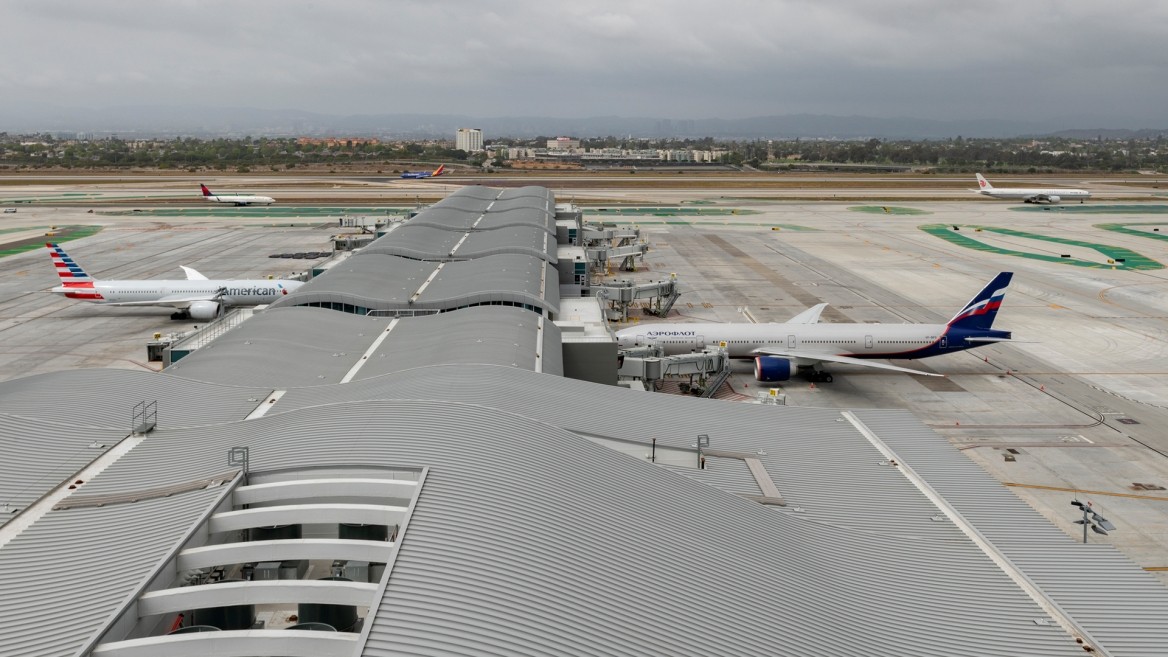New West Gates at LAX, Tom Bradley International Terminal

TYLin served as the primary structural design consultant and Engineer of Record for passenger, baggage, and utility tunnels and a new taxiway for the New West Gates at Los Angeles International Airport’s (LAX) Tom Bradley International Terminal.
Located just west of Tom Bradley International Terminal (TBIT), the five-level, 15-gate, 750,000-square-foot West Gates facility is the latest endeavor in Los Angeles World Airport’s USD 14.5 billion modernization plan for LAX. The goal of the project is to improve connections to the regional transportation system in and around Los Angeles, California, and promote economic growth for the city and its environs.
As a critical member of the design-build team, TYLin’s scope of work included the structural design of three cut-and-cover tunnels that connect TBIT to the new West Gates. The 921-foot-long Passenger Tunnel features three-foot-diameter concrete columns spaced at 20 feet along the centerline to separate arriving and departing passengers. New 1,235-foot and 500-foot Utilidor Tunnels were designed to house upgraded utilities and baggage-handling services, including an underground baggage transition facility.
Since the tunnels are in a high seismic area, TYLin performed soil-structure analysis to evaluate the seismic demands. The firm’s Aviation and Bridge sectors collaborated on the project due to the wide-ranging design. Although bridges were not part of the project, the primary design for the tunnels required Bridge expertise, given the large dimensions, use of concrete columns, and unique seismic evaluation.
For the new north-south taxiway portion of the New West Gates at TBIT project, TYLin provided engineering design services for the construction of a new north-south taxiway west of the existing Taxiway S and east of the West Gates facility. The project included a new taxiway T alignment, new concrete and asphalt pavements, a new service road, new underground utilities, grading, new airfield electrical, security fencing, and new and modified storm drain systems.
PROJECT HIGHLIGHTS:
- TYLin fast-tracked the design of the tunnels, coordinating closely with the contractor to meet tight schedule demands.
- The intensive raking analysis for the tunnels considered two seismic hazard levels, the 475-year return period and the 2,475-year return period.
- The tunnels were designed to support the weight of an Airbus 380-900 or its equivalent, in addition to the self-weight, backfilled soil, and taxiway slab loading.
- To avoid causing operations delays at one of the busiest airports in the United States, TYLin’s design called for tunnel construction under an active taxiway to be performed in two phases.
- TYLin’s taxiway design specified phased construction to avoid interruption to airport services or tunnel construction.
Services
- Seismic analysis
- Stormwater and drainage control
- Structural engineering
- Seismic design
- Project management




